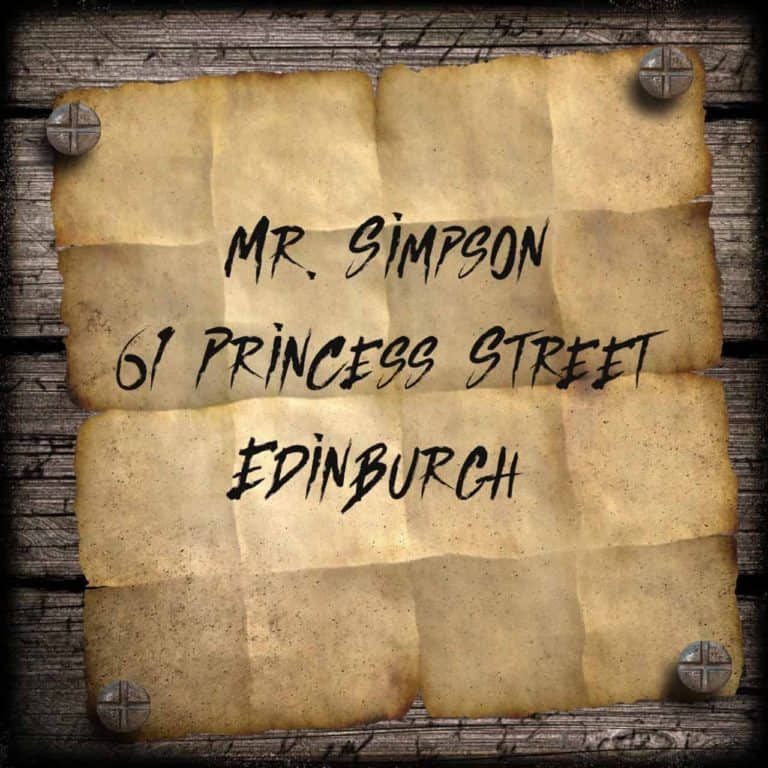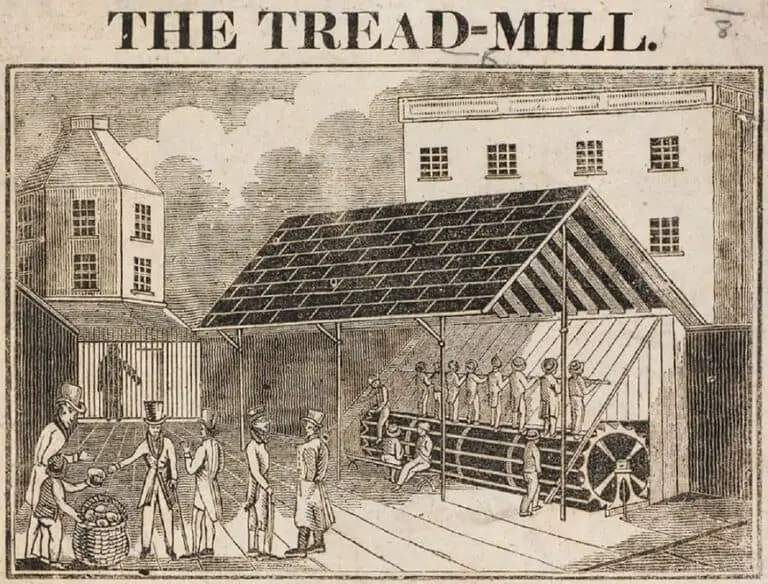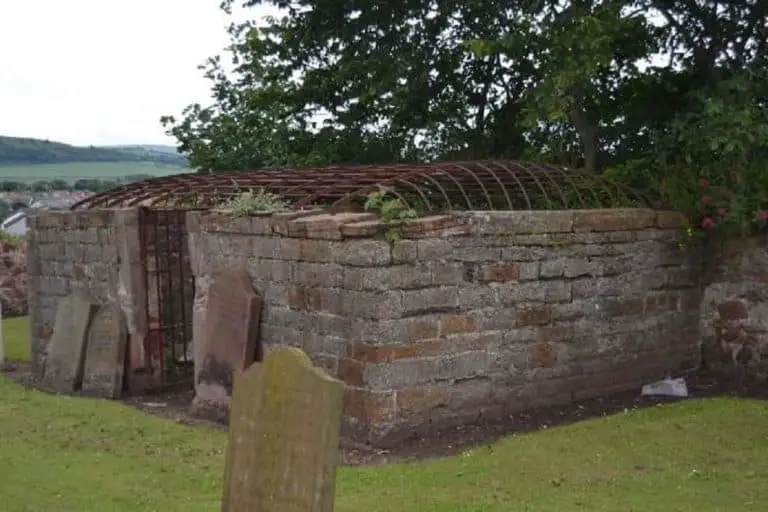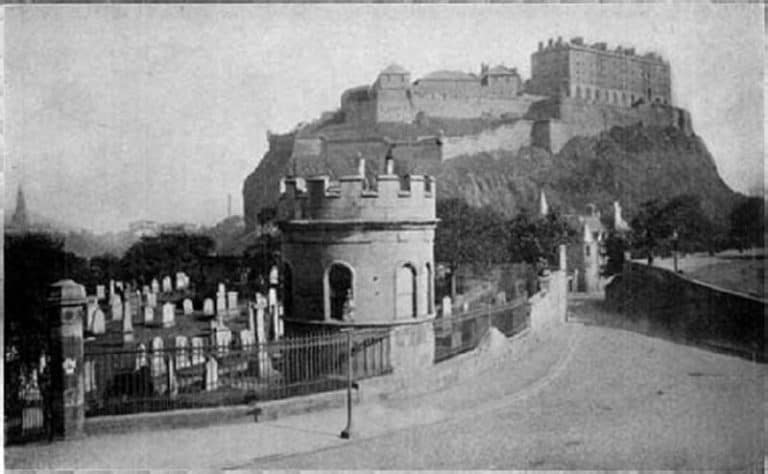Greyfriars Kirkyard: An Ultimate Guide To The Most Famous Graveyard in Edinburgh
This site uses affiliate links to sites, including Amazon. If you decide to make a purchase through any links, I’ll earn a small commission from the sale at no extra cost to you. Please read my Disclosure Policy for further information.
I’m a huge fan of Edinburgh’s ‘world famous’ Greyfriars Kirkyard, also known as ‘The City of The Dead’ which can be found at the wonderfully named 26A Candlemaker Row.
Not only does this graveyard have active poltergeists, body snatching stories and links to a darker past, but it was also the inspiration for Niel Gaiman’s ‘The Graveyard Book.
So whether you’re into graveyards or not, a visit to Edinburgh just isn’t complete without popping into this iconic landmark.
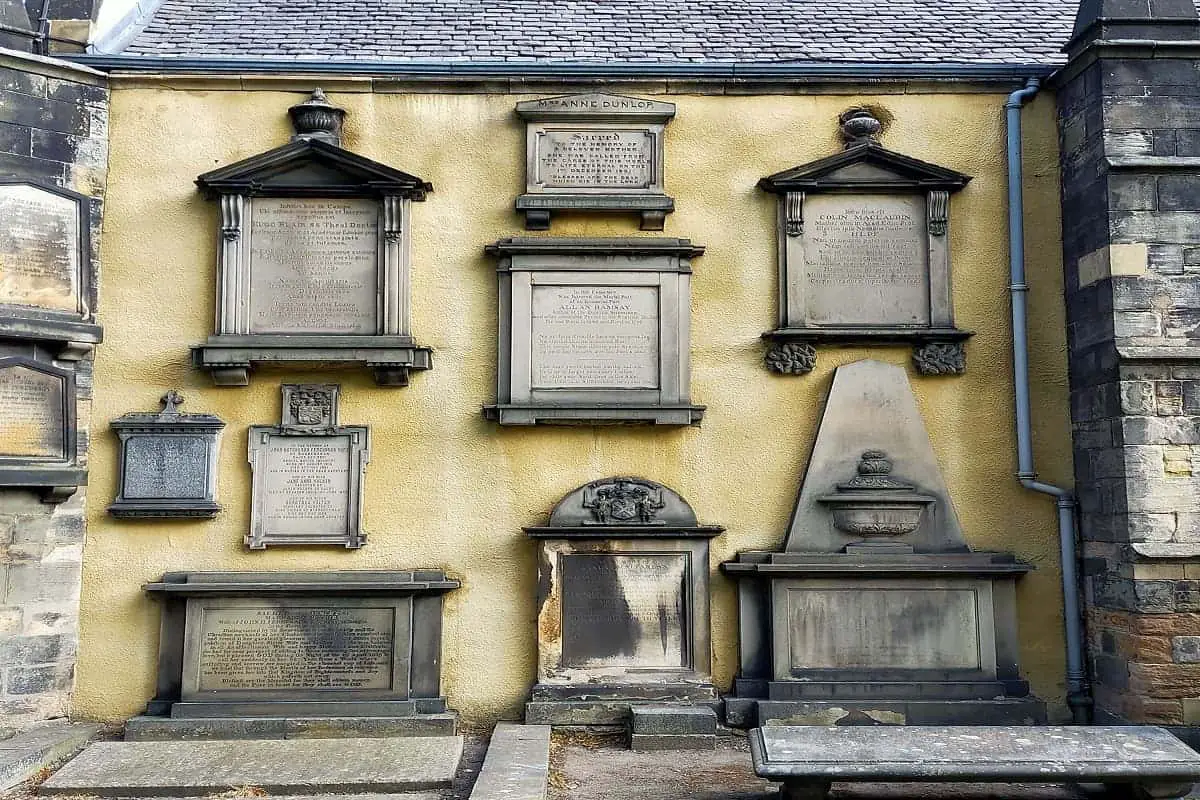
There are over 700 gravestones and nearly 100,000 people buried in Greyfriars Kirkyard in Edinburgh. Burials were granted on the site in 1562 after the city’s original graveyard at St Giles became overcrowded. Surviving a fire in 1845, the last burials in Greyfriars took place in the 1870s and it remains one of the most iconic and haunted landmarks within the city.
With over 1100 burials each year in the 18th century, there’s bound to be something at Greyfriars to pique your interest, just make sure you have these next graves on your must-visit list.
If you’re interested in deciphering the memento mori as you walk around Greyfriars, then grab yourself a copy of ‘Greyfriars Graveyard’ by Charlotte Golledge.
It’s not as complete as say Betty Willsher’s work, ‘Understanding Graveyards’, but it’s specific to the site and I’ve found it invaluable. My own book on Bodysnatching is also included in the bibliography which is all a little crazy!
Table of Contents
- The Famous Greyfriars Mortsafes
- The ‘Dancing Skeleton’: Gravestone of Surgeon James Borthwick
- The Black Mausoleum: The Tomb of ‘Bloody Mackenzie’
- Ghost Tours at Greyfriars
- Modern Break-Ins To The Black Mausoleum
- Books About The Mackenzie Poltergeist
- Covenanter’s Prison
- Greyfriars Watch House: The Creepy Wee Bookshop
- Caged Lairs: The Ultimate in Body Snatching Prevention
- The Grave Of The Real Tom Riddell
- Body Snatching At Edinburgh Greyfriars
- Perhaps Edinburgh’s First Body Snatching Case
- Student Body Snatchers In Edinburgh
- The Grave Of Greyfriars Bobby
The Famous Greyfriars Mortsafes
Walk up to the main gates of the kirkyard and no doubt if you’re like me, you‘ll take a peek past the tourists (Greyfriars is rarely quiet) and see what lies ahead.
Located at the edge of the path on the left-hand side of the Kirk are two mortsafes; iron cages that were built over graves designed to keep the body snatchers out, rather than zombies in.
The mortsafes at Greyfriars date from the late 1820s and are known as ‘double- bedder’ mortsafes.
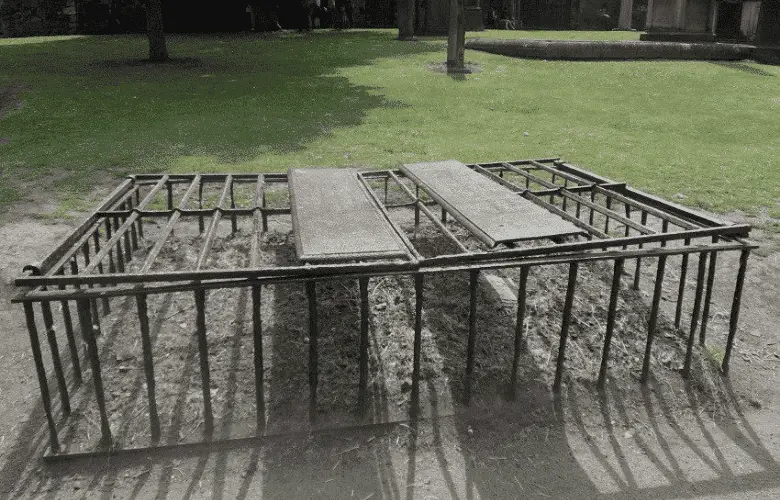

One has been designed to look exactly like an iron cage. It was placed over the grave at the time of burial and bears the date 1829. This is the most originally complete of the two mortsafes.
Did you spot the date? 1829 is the same year that infamous murderers Burke and Hare were finally sentenced for their crimes and in which William Burke was hanged and himself sent off for dissection.
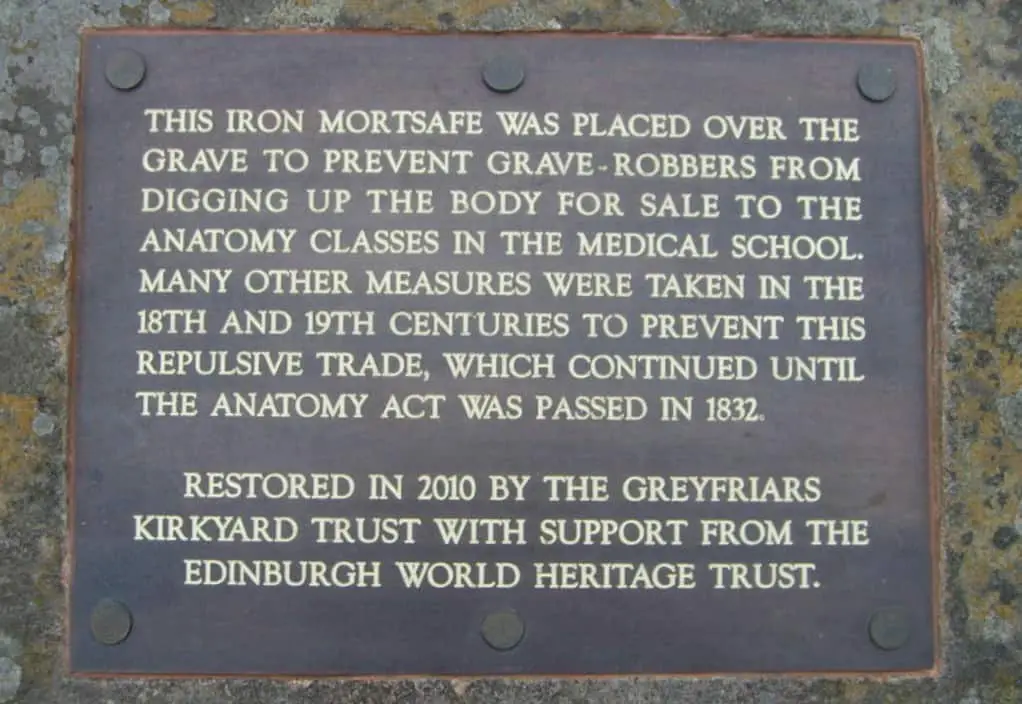
The second mortsafe, restored in 2010 by the Greyfriars Kirkyard Trust with support from Edinburgh World Heritage, only has one original iron bar left.
This grave is said to have been built for the daughters of Major M. E . Lindsay who died in 1837 and 1838.
Some years after the Anatomy Act was passed which promised to end the macabre practice of body snatching.
You can grab a FREE downloadable self-guided trail of Greyfriars, plus other Edinburgh graveyards from Edinburgh World Heritage here.
The ‘Dancing Skeleton’: Gravestone of Surgeon James Borthwick

If your aim is to see possibly the largest skeleton in Greyfriars, then you need to head for the monument of surgeon James Borthwick.
His monument measures 4 meters by 2 meters, so it’s pretty easy to spot.
It’s one of the first that you’ll see as you walk under the main gates at Greyfriars, directly in front of you on the eastern gable of the kirk (Scots word for church).
Borthwick was admitted to the Incorporation of Surgeons and Barbers in Edinburgh in 1645 as a ‘Master Surgeon’ and was the first surgeon employed specifically to teach anatomy. He died in 1676.
His monument was erected by his son, also called James, and you might hear it occasionally referred to as ‘The Dancing Skeleton’.
Take a look at the picture above and you can see how it gets this name. You’re seeing the King of Terrors, holding the book of Destiny and the just to say visible scythe of Father Time.
The memorial also bears the symbols relating to his profession – knives, scalpels, syringes – in the ribbons on either side of the stone.
Look closely along the bottom ridge of the tombstone and you’ll also see the tools of the sexton crossed behind a coffin in the two bottom corners, not to mention one of the smallest skulls and crossbones within Greyfriars.
Long since faded, there was once a Latin inscription along the bottom which has been translated by Golledge in her book that I mentioned at the beginning of this post.
It Read:
To the memory of his father, James Borthwick of Stow, lawful son of the Cruixtoun family, most famous Chirurgeon Apothecary, Mr James Borthwick, his eldest son in a mournful mind placed this monument
The Black Mausoleum: The Tomb of ‘Bloody Mackenzie’
Claimed to be the most haunted cemetery in the world, it’s perhaps only right that Greyfriars is also home to one of the most active poltergeists in Edinburgh.
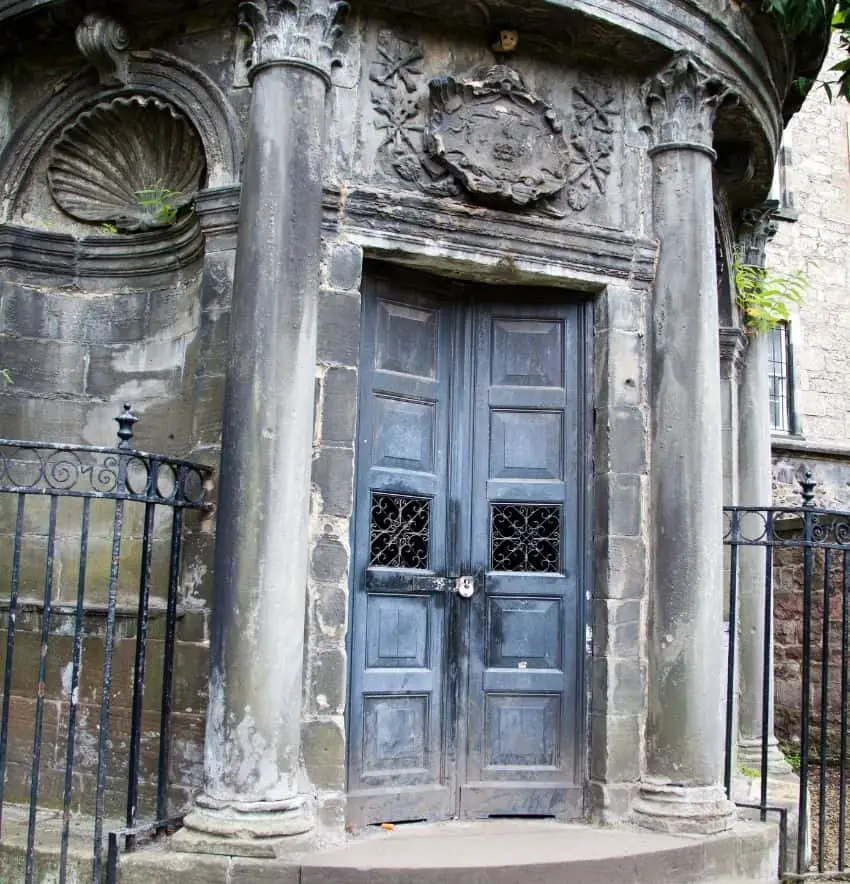
If you’ve read my posts before you’ll know that I’m both petrified and fascinated by all things relating to the paranormal in equal measure.
So when I last visited Greyfriars on a September morning at 8 am, I was a little apprehensive about getting too close to this monument, especially as I was the only one in the graveyard that morning!
But a stop at this iconic mausoleum, probably one of the most recognisable monuments in the kirkyard, can’t be missed no matter how scared you’re feeling.
With its domed roof and striking double doors, this neo-Classical building is the ‘final’ resting place for Sir George Mackenzie (1636/1638-1691) or ‘Bloody Mackenzie’/‘Bluidy Mackenzie’ and is best known for his zealous persecution of the Covenanters during the reign of Charles II.
‘The Killing Times’
Becoming Lord Advocate in 1677, Mackenzie dedicated himself to his new role and later would earn himself an unsavoury reputation as being the most zealous persecutor of Covenanters during what is referred to as, the ‘Killing Times’.
Imprisoning and torturing over 1000 Scots in a make-shift prison in a field which was, at the time, next to the Kirkyard and which is now located in the kirkyard itself, many of the Covenanters imprisoned here suffered from the cruelty of this man. (See below)
Known for its paranormal activity, the ghost of ‘Bloody MacKenzie’ has little peace and is perhaps the most famous, and possibly the most active poltergeist in Scotland.
Ghost Tours at Greyfriars
Tales of visitors being pinched, burnt or bruised abound and if you’re brave enough, you too can see if Mackenzie will have ‘a go’ at you during a macabre graveyard tour.
There are a number of different tours available to take you around Greyfriars but City of The Dead Tours is the ONLY tour company in Edinburgh that has access to the Mausoleum and the Covenanter’s Prison.
With warnings on their website that an encounter with the poltergeist is a highlight of the tour, I’d recommend grabbing tickets before you go, especially if getting petrified is at the top of your list!
They meet nightly at the Tree of the Dead by the roadside wall at St Giles’ Cathedral.
Modern Break-Ins To The Black Mausoleum
The mausoleum itself also has little peace for it has been broken into a couple of times in recent years.
The first was in 1999 when a homeless man was seeking shelter and managed to break into the tomb only later to be plunged through the floor.
Through the window is supposedly an iron grill (I’ve yet to pluck up the courage to get that near to the mausoleum I’m afraid) and while some accounts say that this is a mortsafe, chances are it is more likely to be a modern health and safety measure covering the hole which the intruder created.
In 2004, in a very modern case of body snatching, two youths broke into the MacKenzie tomb and cut the head from a corpse!
Little did they know that they would be charged with a crime that hadn’t appeared in the law courts for over 100 years, that of ‘violating a sepulchre’.
Books About The Mackenzie Poltergeist
City of the Dead Tours recommends two books on the man himself although ‘The Ghost That Haunted Itself: The Gruesome Ghoul of Edinburgh Greyfriars Graveyard’ which you can get on Amazon here seems to be the better of the two.
The other book ‘Father Figure’, by the same author, (Jan-Andrew Henderson) can be found here.
Covenanter’s Prison
Tucked away in the far left corner of the main kirkyard is the Covenanters prison. Locked to the public since 1990, the site is now only accessible on a City of the Dead Haunted Graveyard Tour.
This makeshift prison was in use for four months in the year 1679, its many prisoners being refused shelter and given only a mere 4 ounces of bread a day.
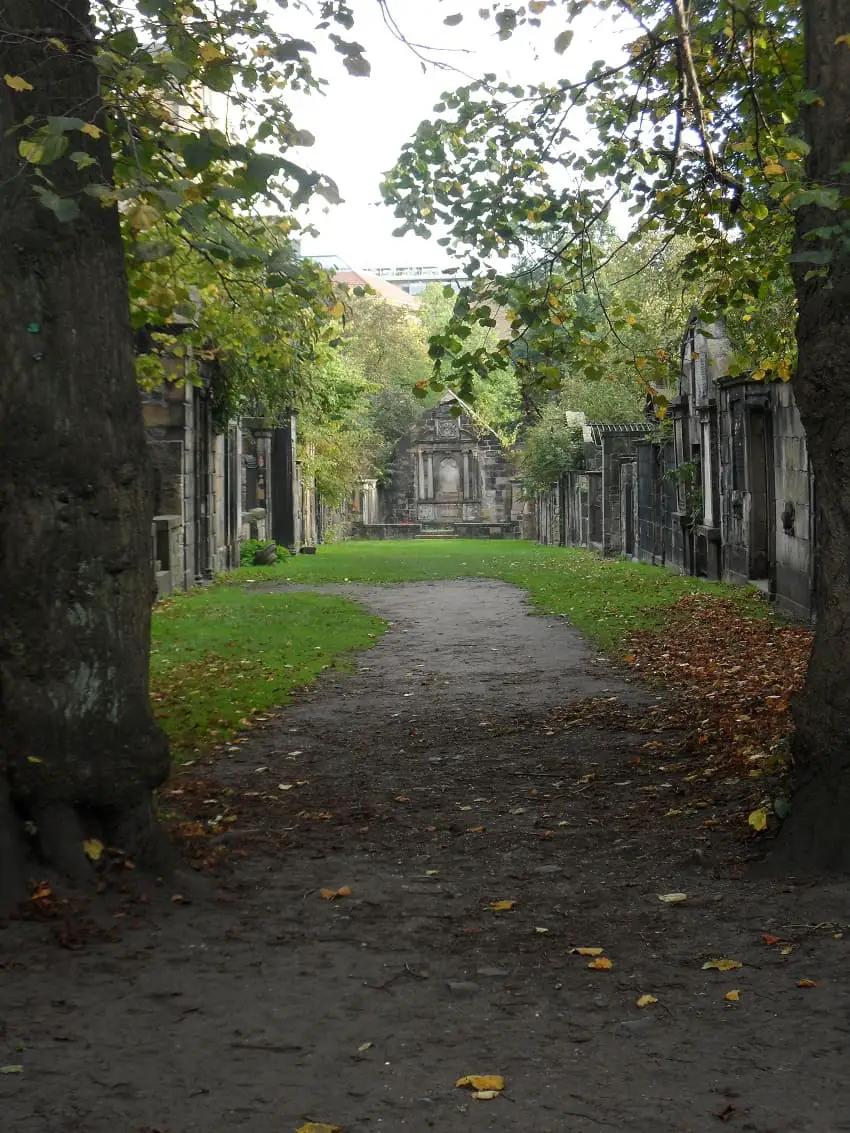
Their crime was to support the National Covenant and defend the established religion in Scotland and once rounded up and thrown into the makeshift prison, they were tortured and cruelly treated until many lost their lives.
Although not containing the graves of any of the Covenanters themselves, the graves behind the locked gates date from 1705, the area still giving off an impending sense of loss. I’ve always found it a very sad part of the Kirkyard.
Those men that survived the ordeal, all 257 of them, pledged loyalty to the Crown and were sentenced to deportation and ultimately sold as slaves.
On their way to the Orkney Islands, their ship was wrecked and 209 of the men on board lost their lives.
If you’re touring Scotland, you may like to know that there is a memorial to the men who lost their lives on the island in the form of a stone tower, set overlooking the head of Scarvataing.
Greyfriars Watch House: The Creepy Wee Bookshop
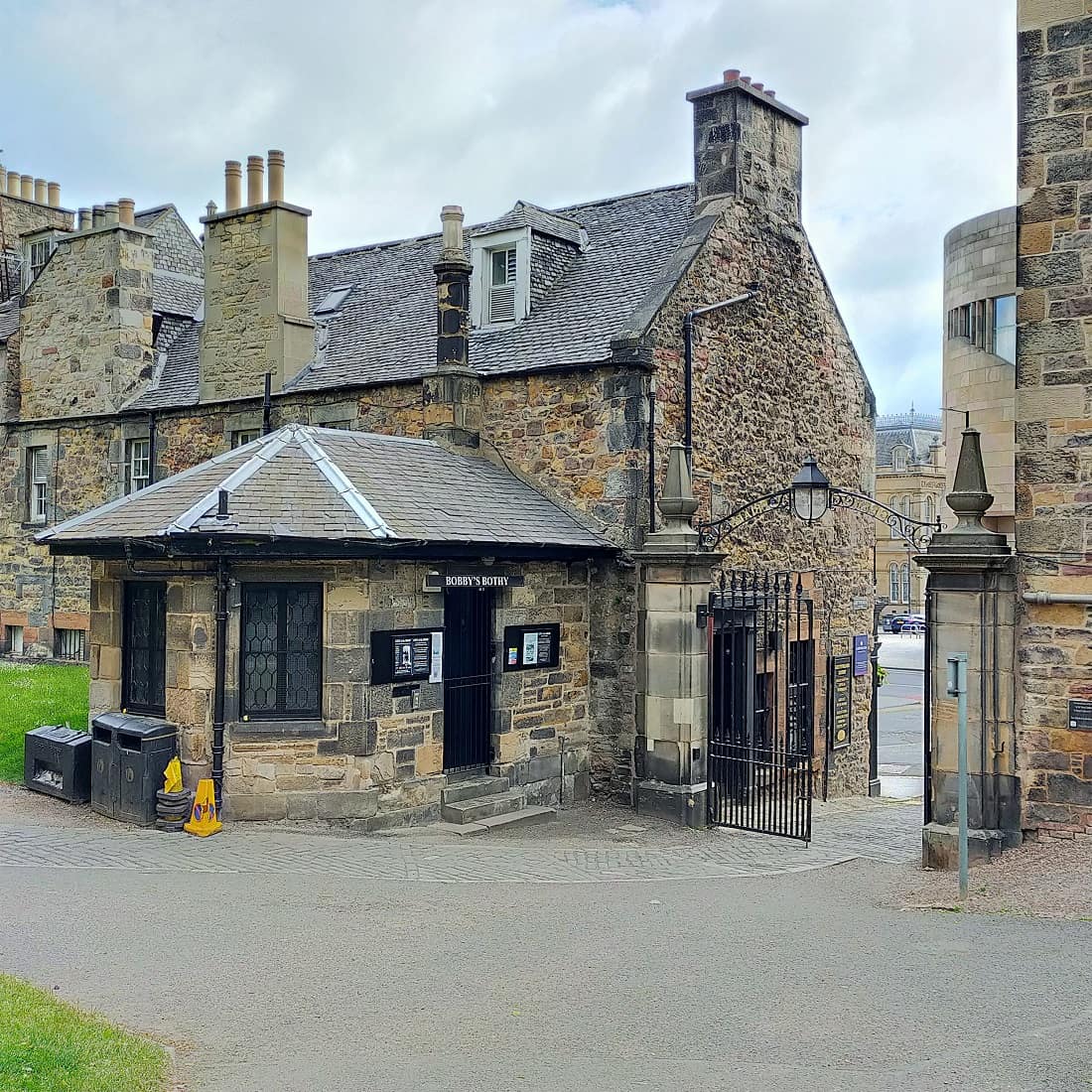
Just to the right of the main kirkyard gates lies ‘The Creepy Wee Bookshop in the Graveyard’ which also acts as the booking office for the City of the Dead Tours – named as one of the UK’s spookiest tours!
But did you know that this bookshop was once the watch house for Greyfriars Kirkyard?
Built in the 1830s, you can still make out the original windows facing out over the graveyard as well as the wee chimney.
This date seems a little late to me as nearby kirkyards such as St Cuthbert’s were erected their watchtower in 1827 after efforts to stop the body snatchers fell short with the raising of the perimeter wall as early as 1738.
Watch houses were used by members of the parish, surprisingly known as ‘watchmen’, who’d watch over the graveyard at night to make sure body snatchers weren’t trying to steal the recently buried dead and sell them to the city’s anatomists.
Body snatching was a macabre trade that was carried out across the country from the early 18th century to the mid 19th century. If you’d like to get a basic overview of this unusual trade, try my post ‘Why Did Anatomists Hire Body Snatchers’ for more.
Caged Lairs: The Ultimate in Body Snatching Prevention
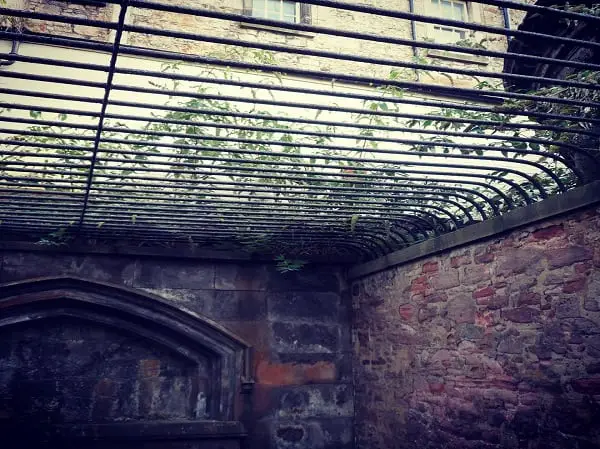
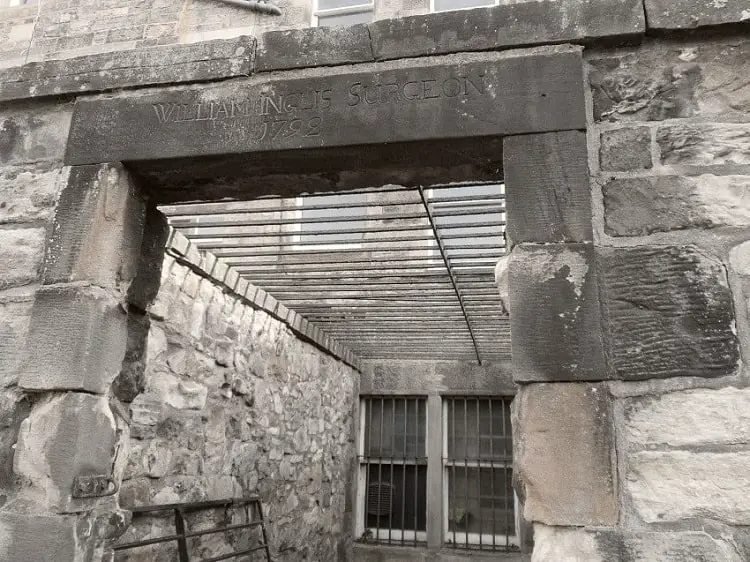
To the left of the main entrance, along the boundary wall of the kirkyard can be found what was considered to be the ultimate in body snatching prevention.
Here you’ll find the former caged lairs of the wealthier citizens of Edinburgh, including one for surgeon William Inglis, dated 1792.
Inglis would have certainly known about the antics of the body snatchers and the graveyard raids; that possibility even his own students went on each night to secure cadavers for the dissecting table.
His lair not only represents his status in society but also highlights his fear of a nocturnal visit from the resurrection men.
Sadly, however, most of the lairs in Greyfriars are damaged in some way or another, but if you look up you can still see the iron-slatted roof that would have adorned all of the enclosures along this wall.
The Grave Of The Real Tom Riddell
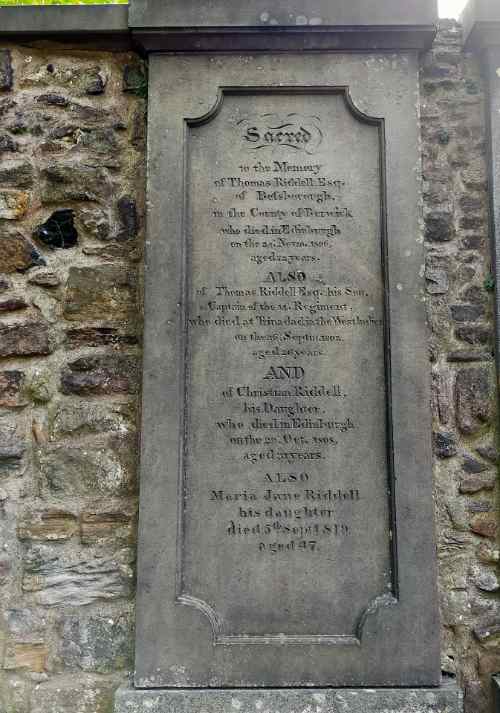
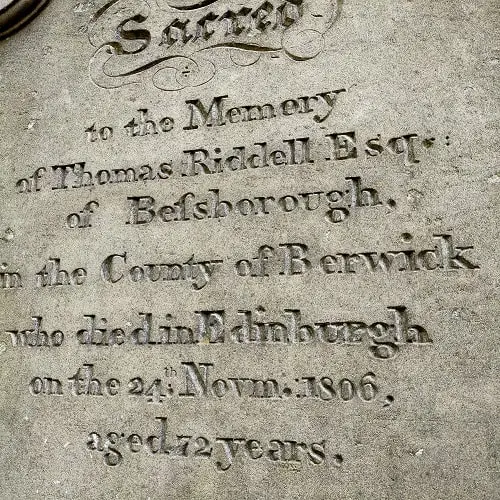
The story of Harry Potter probably doesn’t need any introduction, but the grave of General Thomas Riddell may not be familiar to everyone.
Riddell’s grave is said to have inspired J.K. Rowling’s character, Lord Voldemort, or he-who-must-not-be-named, arch-nemesis to boy wizard, Harry Potter.
The real Tom Riddell died in 1806 and up until the writing of Rowling’s now-infamous books, had rested in peace.
This of course has changed dramatically since the publication of the Harry Potter series, so although it’s great to see the inspiration behind the character, if you do visit the grave, please be respectful and stick to designated footpaths rather than cut across the grass.
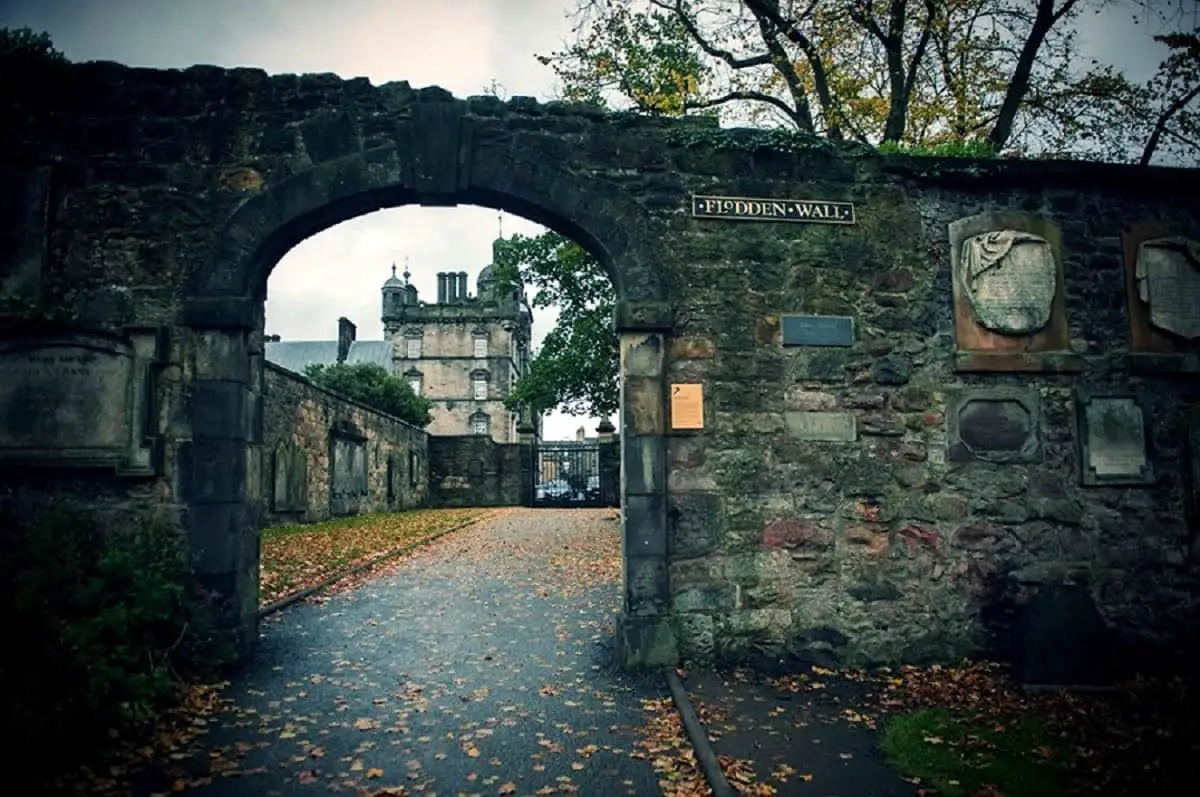
Tom Riddell’s grave can be found by walking through one of six former gates or ports into the city; now an archway cutting through a section of the Flodden Wall, found in the kirkyard.
This will take you into an area of Greyfriars known as the Western Yard, turn right and keep walking to the end.
It’s the grave that is no longer covered in grass.
Body Snatching At Edinburgh Greyfriars
It wouldn’t be right to have a post on the iconic Greyfriars Kirkyard and not include a body snatching tale or two, and it is at Greyfriars where some of the earliest body snatching cases happened in Edinburgh.
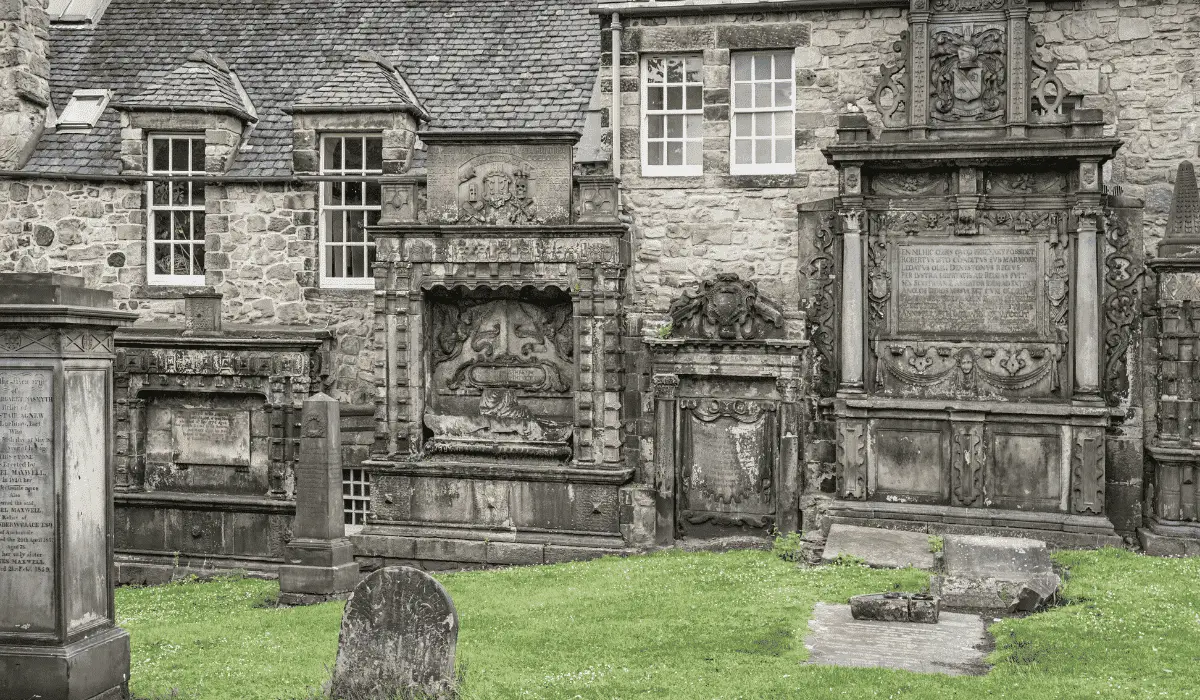
Perhaps Edinburgh’s First Body Snatching Case
In February 1678, a 16yr old gypsy boy by the name of Shaw was snatched from a burial pit in the corner of Greyfriars.
It was to be the first-ever noted case of body snatching in Scotland.
After a member of the rival Faws family was found murdered after a clan battle, the teenager Shaw, together with three others were swiftly accused and subsequently hanged in Edinburgh’s Grassmarket.
Come sunrise, it was discovered that the grave had been disturbed and the body of the teenager gone.
Some thought that he had survived the hanging and had risen again, while others believed that he had been stolen at the anatomists’ pleasure to ‘make an anatomical dissection of’.
Student Body Snatchers In Edinburgh
In the summer of 1711, the year in which the medical students of Edinburgh were removing the deceased from their graves faster than they were being put in it, the corpse of Robert Findlay was taken from Greyfriars.
Many people immediately blamed the surgeons for the snatchings, including those linked to the Incorporation of Surgeons, who, expressing their innocence in the matter, threatened students with expulsion should they be found to be involved.
They rais’d the dead again out of the Dost,
And fold to them, to satisfie their Lust,
As I’m inform’d the Chirurgions did gave
Fourty Shillings for each they receive
The Grave Of Greyfriars Bobby

No visit to Greyfriars is complete without seeking out the grave of probably the most infamous dog in Edinburgh.
Greyfriars Bobby is known the world over for being the dog who dutifully sat next to the grave of his master, John Gray, for 14 years until he himself died in 1872.
Quite uncanny really for Gray himself was a watchman with the Edinburgh Police Force for nearly eight years.
This wee Skye Terrier even has his own statue at the junction of Candlemaker Row and George IV Bridge, although don’t rub his nose if you do walk past him – it’s starting to damage the statue.
Greyfriars Bobby’s grave can be found a short distance from his master’s, just inside the main gates, to the right at Greyfriars.
If Greyfriars Bobby is your thing and you’d like to find out more about the ‘wee fella’ then I think you’d enjoy the Auld Reekie Retold Podcast available on YouTube from Museums & Galleries, Edinburgh.
If you’d like to enjoy a slightly less macabre tour of Greyfriars, then The Caddies & Witchery Tours may be the tour for you.

